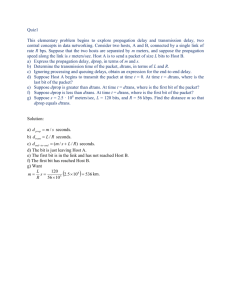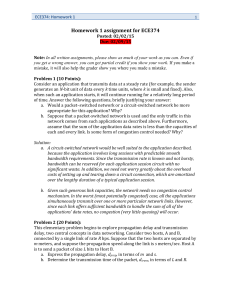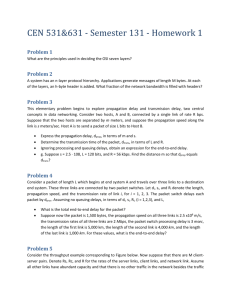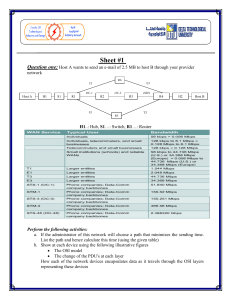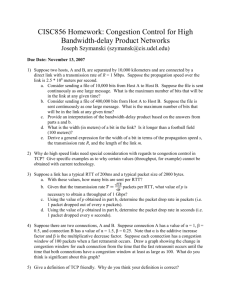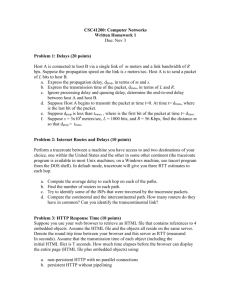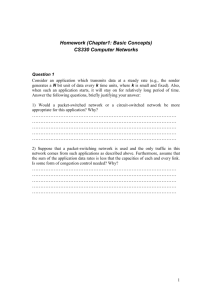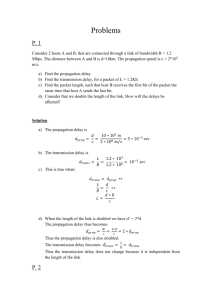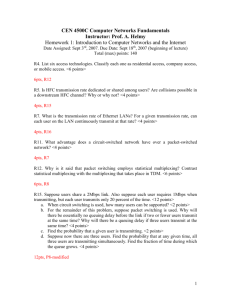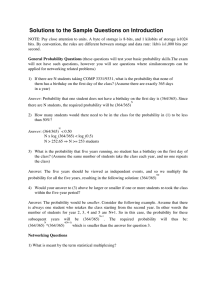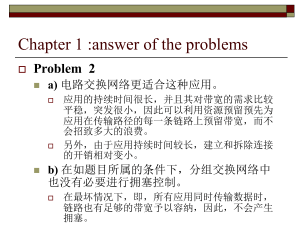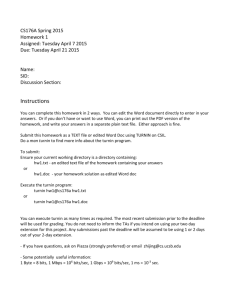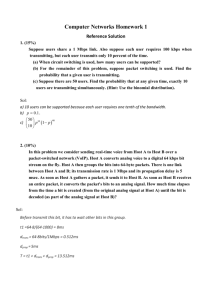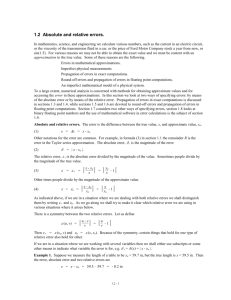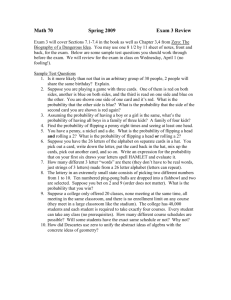Chapter 1 p. 98: P-6 This elementary problem begins to explore
advertisement
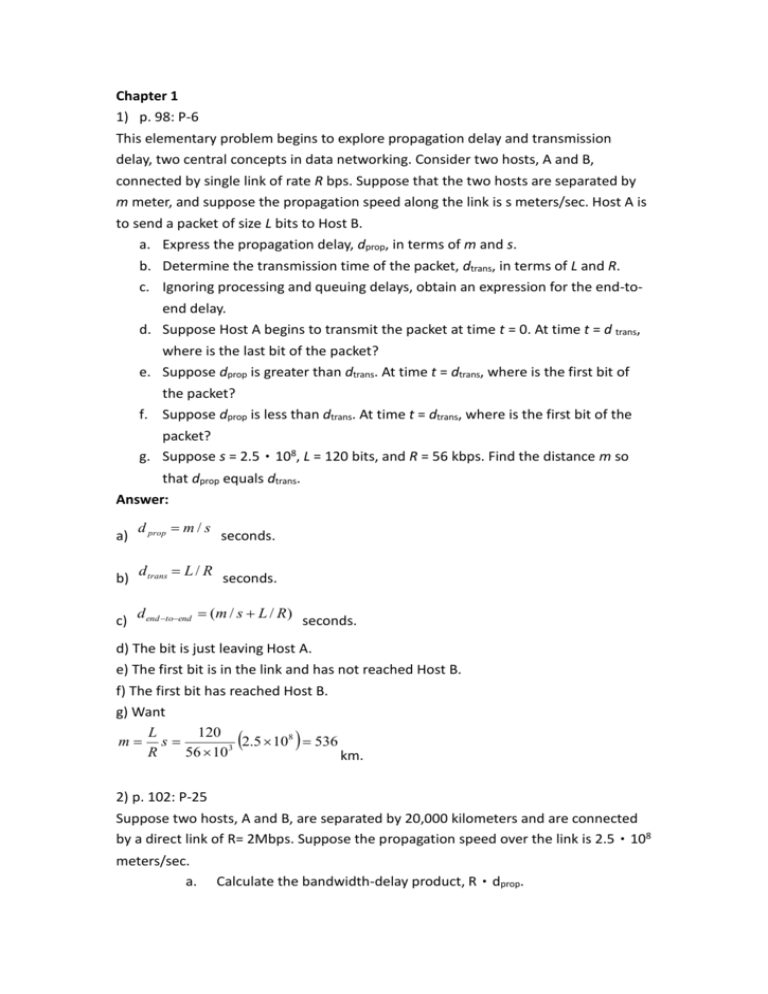
Chapter 1 1) p. 98: P-6 This elementary problem begins to explore propagation delay and transmission delay, two central concepts in data networking. Consider two hosts, A and B, connected by single link of rate R bps. Suppose that the two hosts are separated by m meter, and suppose the propagation speed along the link is s meters/sec. Host A is to send a packet of size L bits to Host B. a. Express the propagation delay, dprop, in terms of m and s. b. Determine the transmission time of the packet, dtrans, in terms of L and R. c. Ignoring processing and queuing delays, obtain an expression for the end-toend delay. d. Suppose Host A begins to transmit the packet at time t = 0. At time t = d trans, where is the last bit of the packet? e. Suppose dprop is greater than dtrans. At time t = dtrans, where is the first bit of the packet? f. Suppose dprop is less than dtrans. At time t = dtrans, where is the first bit of the packet? g. Suppose s = 2.5‧108, L = 120 bits, and R = 56 kbps. Find the distance m so that dprop equals dtrans. Answer: a) d prop m / s seconds. b) d trans L / R seconds. c) d end toend (m / s L / R) seconds. d) The bit is just leaving Host A. e) The first bit is in the link and has not reached Host B. f) The first bit has reached Host B. g) Want L 120 m s 2.5 108 536 3 R 56 10 km. 2) p. 102: P-25 Suppose two hosts, A and B, are separated by 20,000 kilometers and are connected by a direct link of R= 2Mbps. Suppose the propagation speed over the link is 2.5‧108 meters/sec. a. Calculate the bandwidth-delay product, R‧dprop. b. Consider sending a file of 800,000 bits from Host A to Host B. Suppose the file is sent continuously as one large message. What is the maximum number of bits that will be in the link at any given time? c. Provide and interpretation of the bandwidth-delay product. d. What is the width (in meters) of a bit in the link? Is it longer than a foot-ball field? e. Derive a general expression for the width of a bit in terms of the propagation speed s, the transmission rate R, and the length of the link m. Answer: a) 160,000 bits b) 160,000 bits c) The bandwidth-delay product of a link is the maximum number of bits that can be in the link. d) the width of a bit = length of link / bandwidth-delay product, so 1 bit is 125 meters long, which is longer than a football field e) m/((m/s)*R) = s/R
